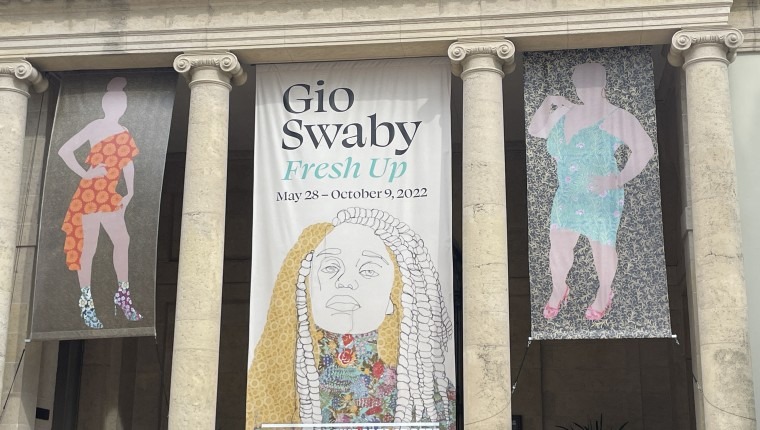Story and Photos by Emily Stehle
. . .
Be Stylish! Dress Up. Strike a Pose.
. . .
Through October 9
Museum of Fine Arts
Details here
. . .
Bahamian artist Gio Swaby’s life-size threaded portraits of the beloved women in her life on exhibit at the Museum of Fine Arts is exciting to see. . . and exhilarating to watch in action.
A few weeks ago, I happened to literally almost run through the rooms housing the Swaby show at the MFA after viewing the Art Bridges Collection exhibit. I had missed the May opening and companion events and wanted a glimpse of what I had missed as I enjoy fiber art.
So I swung by, took quick photos of the narratives and some of the portrait fiber pieces. I knew I had to return. Come to find Swaby’s 40+ works dating from 2017-2021 needed more “brain power” and more than a 25-minute museum visit. The pieces looked simple, but were actually complex in their fabrication.
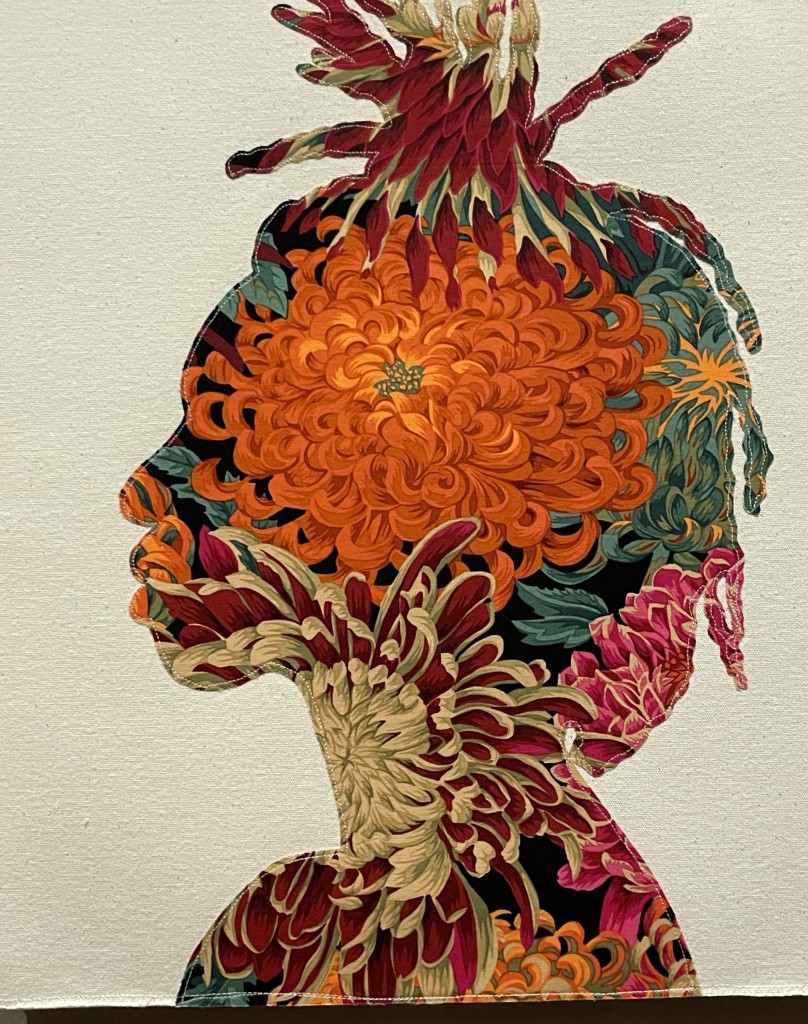
I wanted to enjoy Gio Swaby’s “love letters to Black women,” as described by the artist herself, re-read the narratives and examine her textile techniques of sewing and appliqué quilting. Before COVID-19, museum visits and art shows were something I did with friends. I missed that, so I decided to invite a bunch of friends via Facebook to come to a “girls’ night out” on a Thursday when the MFA has extended hours.
My quest – take photos of them next to their favorite Swaby “pose.” Later we’d hang out and share our thoughts about this exhibit of what is typically considered women’s work.
Luckily, only four took me up on my Facebook and personal messaged invitations. A larger group would have been overwhelming. Thank you, my dear friend Melissa Reddington, who’s game for anything, and Mary Anna Murphy, who brought along friends Luz Sackett, Monica Opaskar (Luz’s niece) and Deann Coop.
Fresh Up comes in several parts. . .
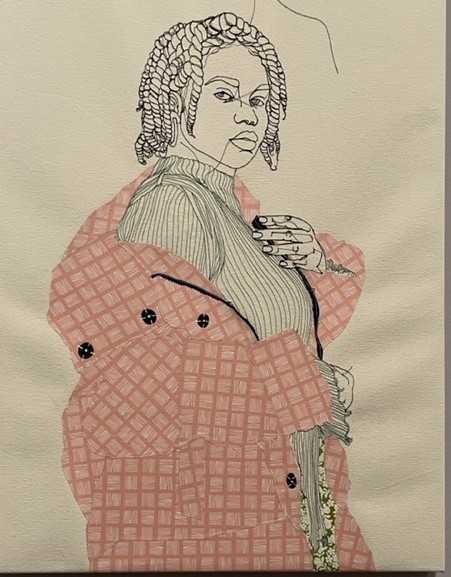
Fresh Up
. . .
Swaby explains that the term is “a Bahamian way to describe someone who is particularly stylish – also used to give props to the wearer.” The exhibit includes a series of smaller portraits titled My Hands are Clean that address how folks respond to Black hair and how invasive and rude people are for wanting to touch it.
“Don’t touch my hair. . . you are not qualified. You will certainly disturb the magical forces that hold my fro or braids or my flat twists in all their glory. Caring for my hair is an act of love, initiated and mediated by touch. . .”
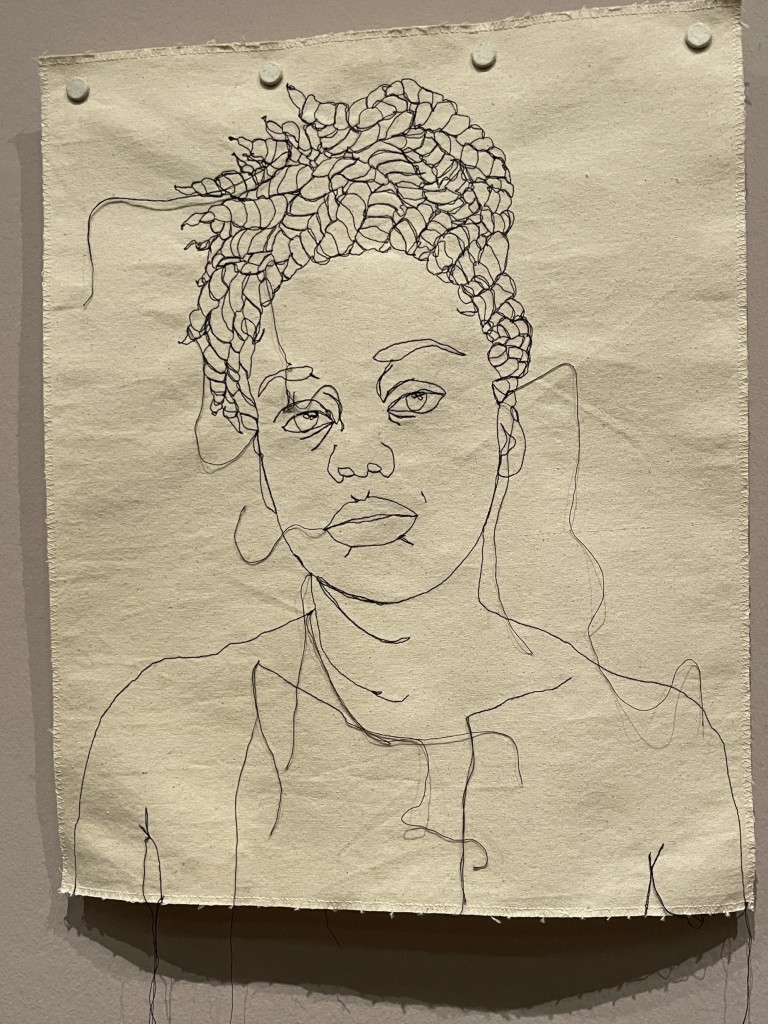

Another Side to Me
. . .
Swaby’s first exploration of displaying the “unfinished” underside of a stitched piece. It’s usually the part that is concealed and never seen, with knots and unruly threads. The artist first used a free motion quilting machine for her work at a residency at Popopstudios International Center for the Visual Arts in Nassau in 2013.
Swaby says this work “reflects so much of what it means to me to be human – fallible and imperfect.” It “recognizes multilayered ways on being and resists a singular and simplified perception of Blackness and womanhood.”
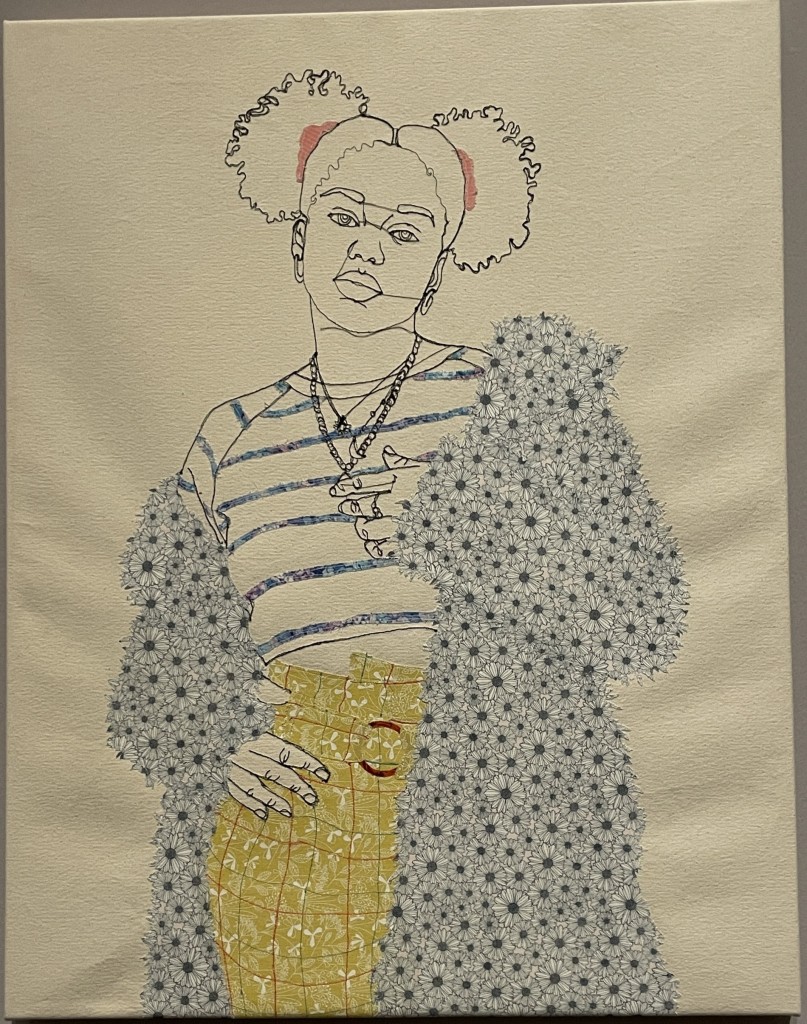
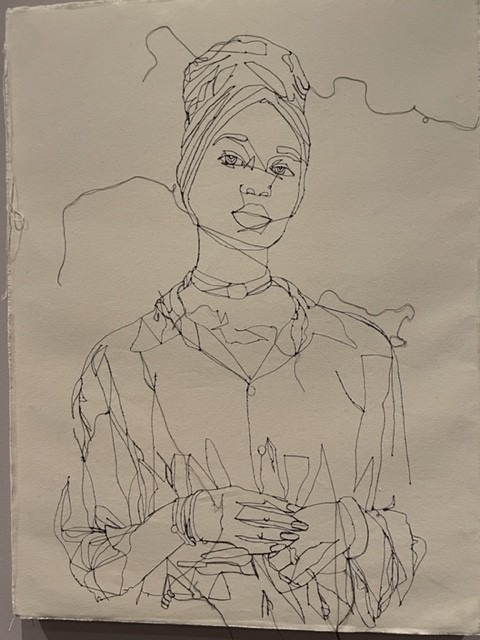
. . .
Love Letter
To my mother and my grandmother no longer here in the flesh you will always carry on in my heart and through my work. . . I am deeply honored to contribute to a movement of healing that has been cultivated through the immense and unwavering care of Black women globally. . . I create this work in celebration of us. Always and forever.
. . .
Gio Swaby’s touching love letter of life-sized portraits is one that many of us wish to deliver to the women in our lives. You know, those who have always supported us and love us unconditionally. Her message addressed to Black women is very personal, touching and truly universal.
The portraits are casual and “elegant” (described by Deann Coop) line-sewn renditions of photo plus the addition of quilting. There is no mistaking the attitude and presence of each of the “models,” Swaby’s women friends and relatives, based on the colors of their clothes, their proud stance and direct gaze into the eyes of “the photographer.”
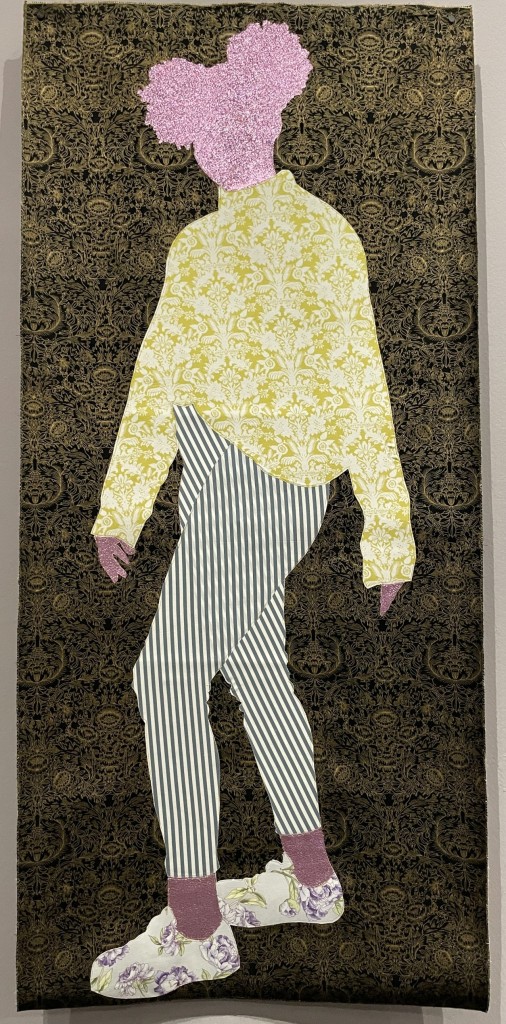
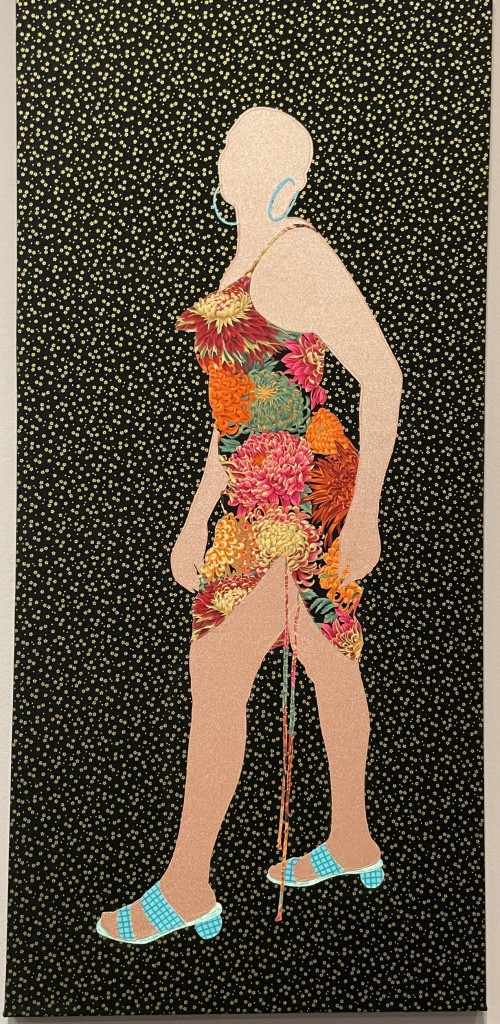
Gyalavantin’
. . .
Swaby laments the time lost during the COVID-19 pandemic to seeing family and friends, but she also looks forward to a future of safely connecting.
Remote photography was used for this triptych which will be placed in the U.S. Embassy in Nassau. This work is connected to the Love Letter series but is not technically a part of it.
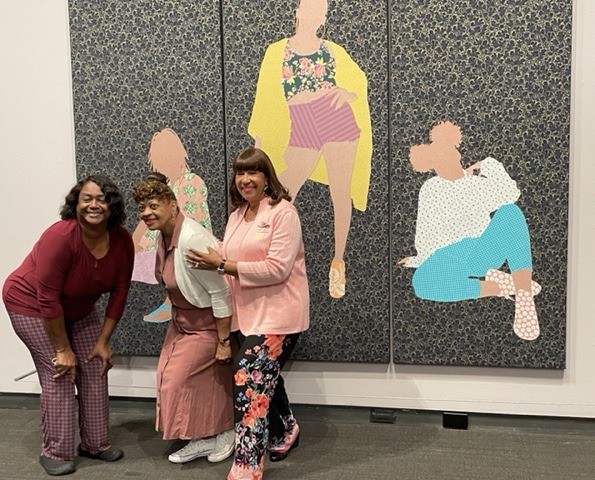
Three members of Top Ladies of Distinction, Inc. a social and nonprofit organization, were already posing so I asked permission to take a photo.

Pretty Pretty
. . .
Love Letters and the Pretty Pretty series resonated with all of us. Swaby writes, “I see you, bright and beautiful, perfectly imperfect, nuanced and complex. I want you to have the space to be just you who are, unapologetically and without explanation. I want us to thrive, to rest, to be joyful, to love and be loved without limitations. . .”
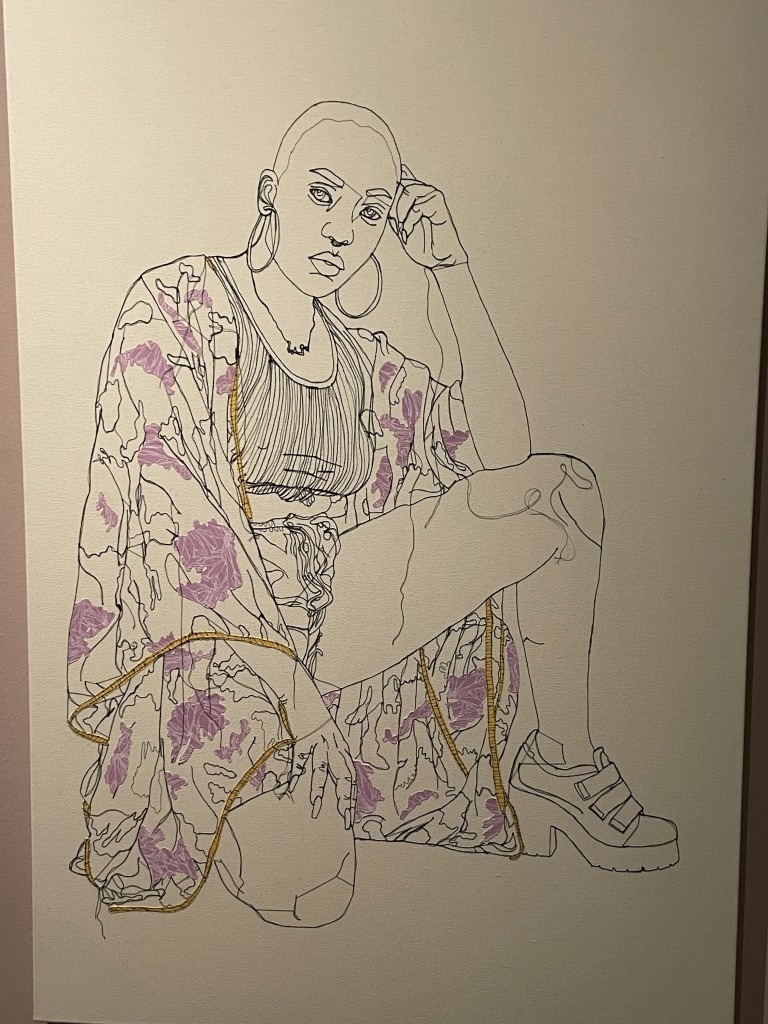
Going Out Clothes
. . .
In the Bahamas, the girls separated their wardrobes into three categories – yard, church and going out. We do that here, too. Going Out Clothes make us all feel great about who we are, where we are and and what we’re doing.

New Growth
. . .
An ode to Black hair and its magic. Swaby says it’s a physical connection to her lineage, “a glimpse into the existence of my ancestors whose personal histories were buried in colonial retellings.”
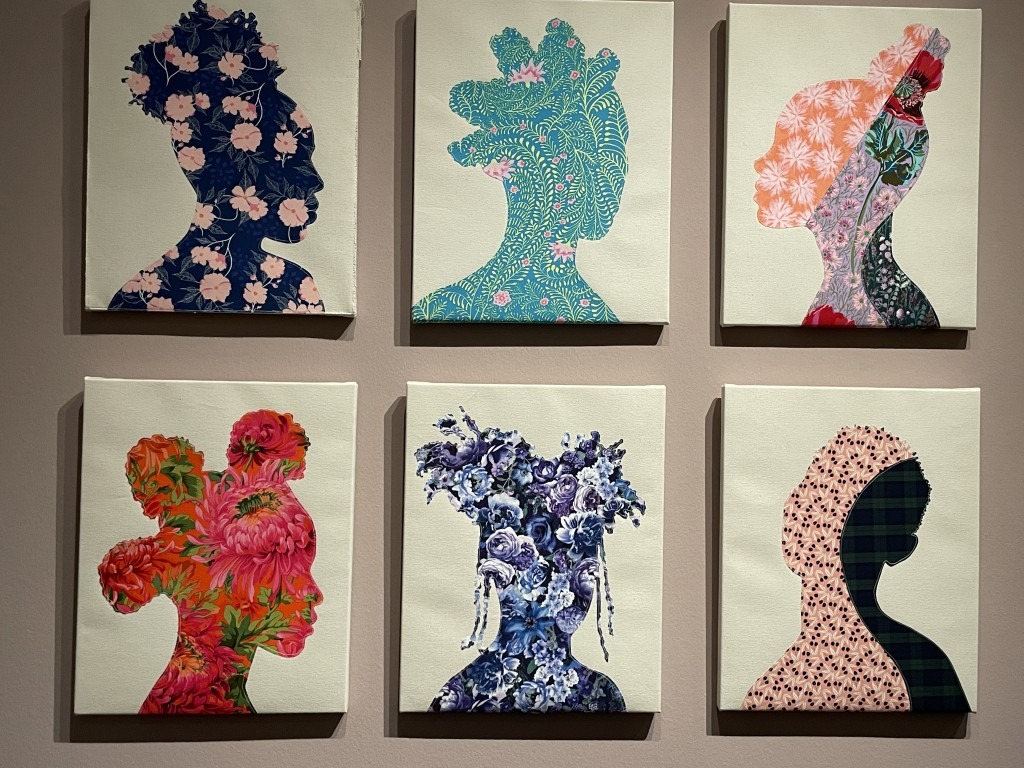
The Social Experiment –
All of Us Felt We Were Swaby’s Girlfriends
. . .
There was a common thread (excuse the pun) throughout the show that resonated with all of us. It was sewing.
Swaby had grown up in the Bahamas surrounded by the threads and fabrics of her mother, a seamstress. Her work in fiber and sewing had us reminiscing about clothing sewn by our mothers or other relatives and even by ourselves. We all grew up with thread, fabric and childhood memories accented by our clothes.
The six of us spoke briefly as we walked through the galleries and examined the oversized sewn portraits to select our favorites for the “Strike a Pose” photo opp. Everyone said the women were proud, sassy, spunky, reflective, confident and brimming with life.
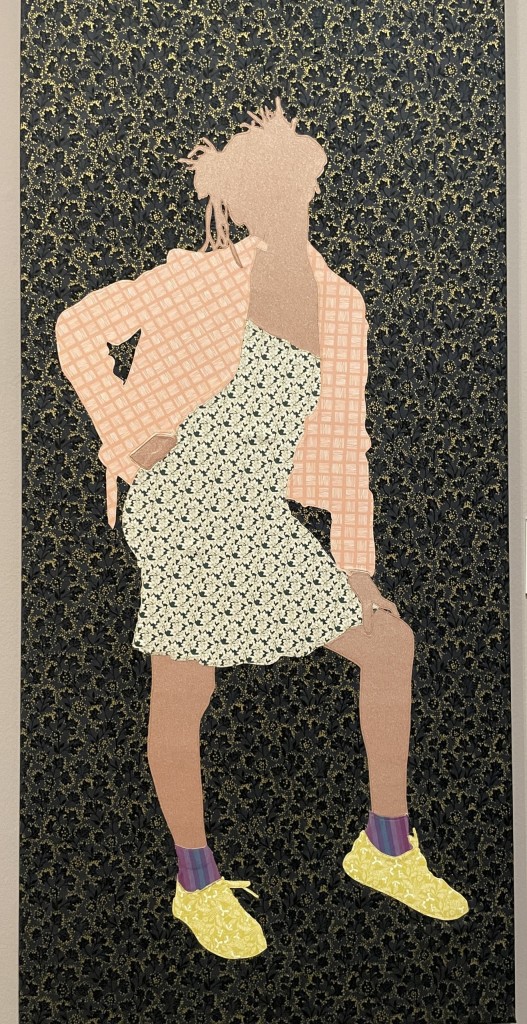
. . .
Strike a Pose!
. . .
I noticed lots of smiles on other folks (mostly women) roaming through the galleries that night. Everyone’s cell phones were out. I imagined that if the clicking sound of a camera had been activated on all the phones, it would’ve sounded like a paparazzi fest!

After touring the exhibit, my group of “Fresh Up” Girls – well, women –x decided we’d discuss our take over drinks. We ended up walking across the street to Fresco’s for drinks and dinner.
There we learned many of us wore handmade clothing. We all talked about the makers. I talked about the light blue wool coat that my mother made for me when I was four. She sewed all the clothes for me and my two older sisters.
I have pictures of me proudly wearing that coat with my black patent Mary Jane shoes that had straps you could flip backward so they’d be strapless. I loved that coat – the collar was trimmed with mink! Don’t ask me how that happened, but my ever-resourceful mom found a little scrap of fur, just perfect for embellishing a little girl’s coat.
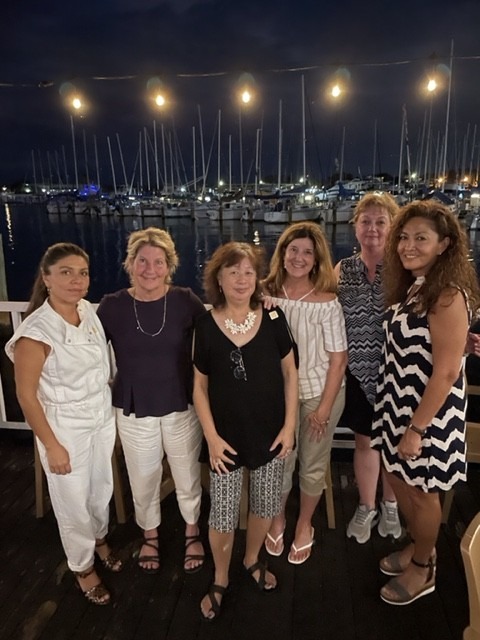
We all loved the Gio Swaby Fresh Up exhibit for many of the same reasons. We felt that “we” and our friends were represented in the show. Swaby’s celebratory portraits of confident, strong women made us all feel and become very powerful.
It showed, as one said, so “many different phases of us. . . different looks, different phases of our life. A complete package of the Black female. . . all American women.”
Deann Coop met Gio Swaby and her family on opening night. “She was so loving. . . her family was all here.” Deann saw their loving relationships in Swaby’s artwork. “There was a casualness about it. Approachable and so real. She was like your next-door neighbor.”
Mary Anna Murphy said, “Powerful images. Powerful women.” She examined the use of blank space in Swaby’s portraits. “You look at the image and ask why the upper half was empty. But you can see her, you can visualize her standing up and filling up the space.”
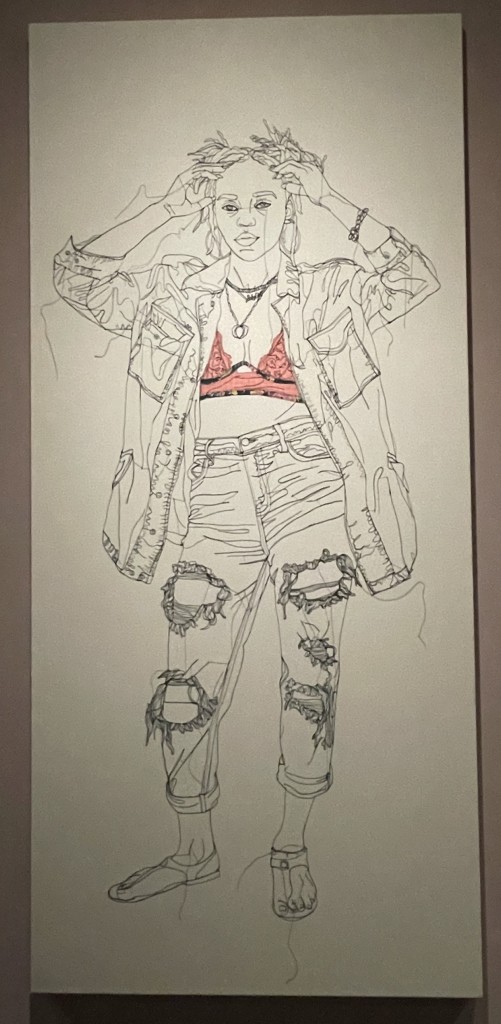
Luz Sackett related to the clothes and narratives, and the difference in the women’s attitudes as she went through the galleries. She noticed how soft the women’s eyes were in Swaby’s first gallery and how the women appeared stronger and more powerful as she went further into the exhibit. “They were so out there, showing what she has. . . confidence.”
Monica Opaskar examined the emotions behind the narratives and portraits. In My Hands are Clean, Swaby said, “Don’t touch my hair. You’ll ruin that nap.” The second gallery was the party “Girls’ Night Out – I can wear my fun clothes, I’m with my girls” room. The Pretty Pretty series in the third gallery conveyed the thought, ‘I’m enough. This is me. This is who I am.’”
Melissa Reddington felt that she had come home. Women have always worked in fabrics and thread and her mother “sewed all my Halloween costumes. I remember being in my 20s and 30s and feeling so powerful and self-secure as all the women portrayed in the quilts.”
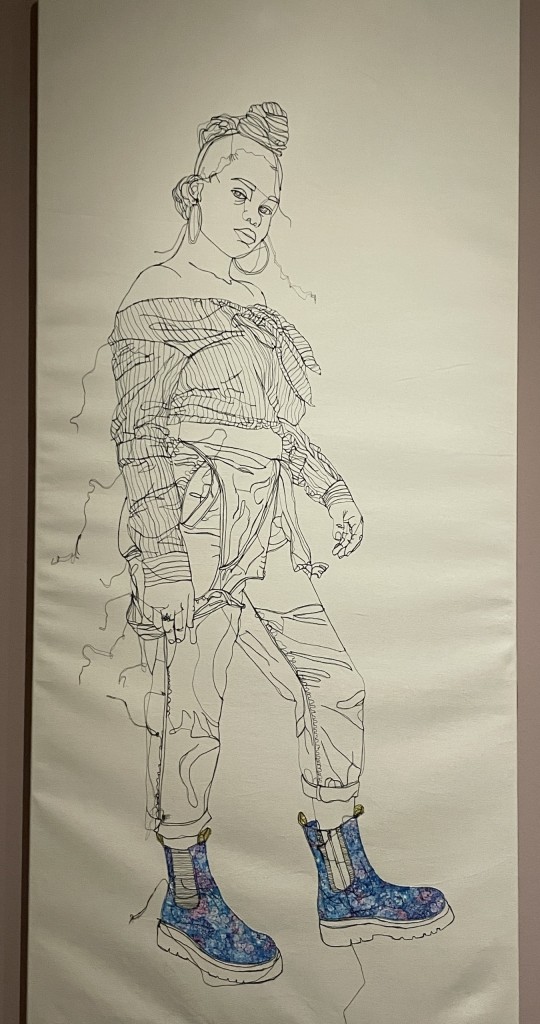
The exhibit was so relatable. “I have felt like that, so strong and powerful. To see (the women) in many ways is like seeing my feelings in person. I feel good about myself.”
Interestingly, Darcy Schuller, MFA director of marketing and communications, has a similar feeling. On difficult work days, she finds herself heading to the Fresh Up exhibit. The power surge is infectious. Right away feels refreshed and ready to take on the world. . . back at her desk.
As for me, this was a social experiment with strangers who became friends over the universal idea that there is a sisterhood amongst women. Yeah, sounds kind of corny, but. . . we had a fun taking photos, eating dinner together and getting back to being social, the life we had before COVID-19, where a group would get together and enjoy each other’s company and conversation.
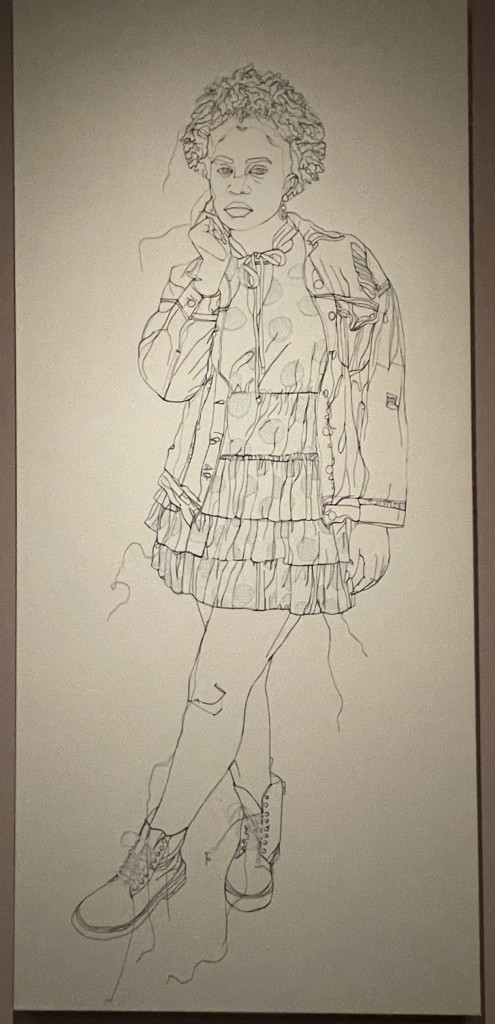
I’ll end this social experiment with the last verse of a song I heard played in the restaurant while doing interviews. No lie. I had been hearing that tune in my head all that night while wandering through the galleries.
. . .
“Greta Garbo, and Monroe. . .
Dietrich and DiMaggio. . .
Marlon Brando, Jimmy Dean. . .
On the cover of a magazine. . .
Grace Kelly, Harlow, Jean. . .
Picture of a beauty queen. . .
Gene Kelly, Fred Astaire. . .
Ginger Rogers dance on air. . .
“They had style, they had grace. . .
Rita Hayworth gave good face. . .
Lauren, Katharine, Lana too. . .
Bette Davis, we love you. . .
Ladies with an attitude. . .
Fellas that were in the mood. . .
Don’t just stand there, let’s get to it.
Strike a pose, there’s nothing to it. . .”
. . .
– “Vogue,” by Madonna
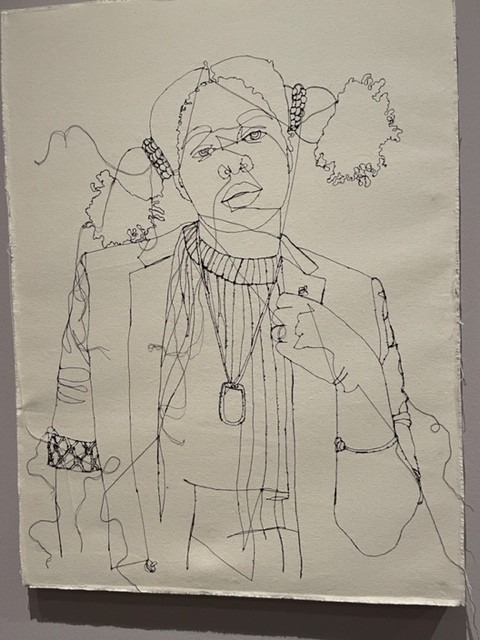
Gio Swaby’s Fresh Up exhibition was co-organized by the MFA and the Art Institute of Chicago. It will travel to the Art Institute of Chicago where it will be on view from April 8 through July 3, 2023. The show will then travel to the Peabody Essex Museum in Salem, MA from August through November 2023.
. . .
Museum of Fine Arts
255 Beach Drive NE
St. Petersburg FL 33701
10 am-5 pm Tuesday, Wednesday, Friday and Saturday
10 am-8 pm Thursday
noon-5 pm Sunday
727-896-2667
mfastpete.org
